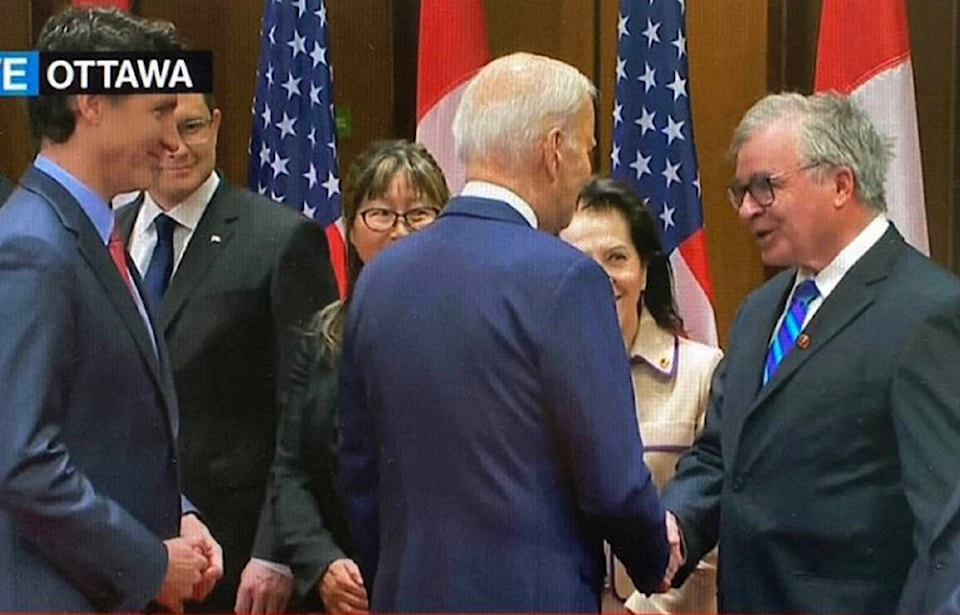Critical minerals are the key to progress in this country.
Every ambition related to a greener, more sustainable, and “just transition” in this country is reliant on stable, steady access to critical minerals.
Despite mining often being demonized in certain quarters of the country, advocates and lobbyists helped the government understand this reality and it resulted in $3.8B to support the exploration, mining and refinement of 31 critical minerals in Budget 2022. They later released their Critical Minerals Strategy titled, “From Exploration to Recycling: Powering the green and Digital Economy for Canada and the World.”
The funding alongside the strategy will be significant as we move toward a more sustainable future; however, the North cannot be left behind.
When we talk about supporting exploration and mining of critical minerals, we should consider projects like the Grays Bay road and port project. This project is timely as building an all-weather road to the Coronation Gulf beginning in Yellowknife will be a catalyst for the development of the rich mineral resources, both currently discovered and in future – including known deposits of critical minerals – from the very rich Slave geological province at a time when critical minerals are priorities for our federal government.
It is this road and port which will be the vehicle for unlocking Nunavut’s ability to support the current priority of our federal government to supply critical minerals through Canada’s Critical Minerals Strategy. It is this strategy which could support the cost of vital, multi-purpose, multi-user infrastructure to make the production of critical minerals feasible in Nunavut.
On Dec. 21, 2022, the Liberal government published draft regulations requiring that all new passenger vehicles and light trucks sold in Canada after 2035 be electric zero-emission vehicles. The rules will be phased in gradually, starting with a 20 per cent requirement in 2026. However, electrification is outpacing the mining of the required raw materials.
According to the Canadian Mining Journal, it takes an average of seven to 10 years to permit and build a mine in Canada. Conversely, it takes two to five years to build a new battery plant, and some gigafactories can be built in just a few months. Many of those on a waiting list for a new electric vehicle will tell you that we simply cannot meet the demand for electrified vehicles at this moment.
Renewable energy infrastructure
In terms of alternative energy, Natural Resources Canada writes on its website that, “The Government of Canada views nuclear energy as an important component of a diversified energy mix. It has taken necessary measures to ensure the long-term development of nuclear energy as a sustainable energy source in meeting our existing and future energy requirements.”
Since the Standing Senate Committee on Energy, Natural Resources and the Environment released its report, “Powering Canada’s Territories” in 2015, there have been many advances in renewable energy infrastructure. Wind turbines can now more reliably withstand Arctic weather conditions; batteries for solar power have advanced in design and accessibility; and small nuclear reactors (SMRs) are increasingly being recognized for their many advantages. The advantages of SMRs include the fact that they are relatively easy to construct; they are modular and so you can expand the project to fit the growing needs of communities easily; and they are extremely safe sources of energy. It is also significant that Canada is the world’s fourth largest uranium producer, accounting for 9 per cent of the total uranium produced globally.
In Nunavut, the Kiggavik deposit in the central region of the territory – the Kivalliq – has the potential to be another Athabasca Basin and one only needs to look at how the primary, secondary and tertiary industries resulting from Cameco’s Cigar Lake and McArthur River mines, to know the potential that rich resources and sustainable development can boost the local economy and shape and entire region.
Another major green initiative that Canada can contribute to is the move to “green steel.”
The World Economic Forum, in its July 11, 2022 blog post discuss the carbon footprint of steel and the trend to move toward green steel, which is essentially steel made by electric furnaces as opposed to the traditional blast furnaces that are fed by coal. All steel cannot be green steel, as it requires low carbon hydrogen and high-grade ore.
Baffinland Iron Mine’s ore grade is the quality that green steel producers would require. Building the train to Steensby, as currently permitted, would enable our territory to participate in a worldwide movement in a significant manner. This demand will not abate anytime soon and the reserves at Mary River could lead us to be a major supplier of high-grade iron ore for the green steel movement for the next 100 years.
Nunavut can play a vital role in achieving our national ambitions with regard to critical minerals and a greener economy. We just need to make sure we make the right investments to meet these goals.
—Senator Dennis Patterson is a former premier of the Northwest Territories who served for 16 years in its Legislative Assembly. He played a key role in the creation of Nunavut and represents the territory in the Senate.
For more stories from Nunavut Mining, click here: https://www.nunavutnews.com/nunavut-news/mining-2023/
